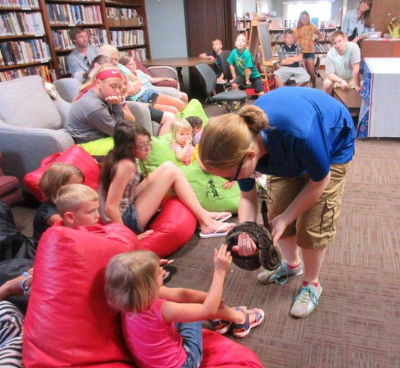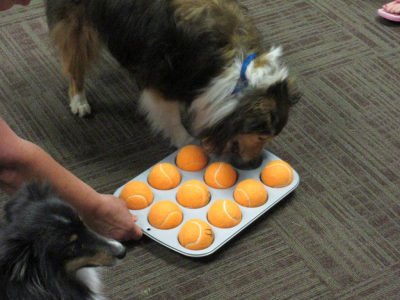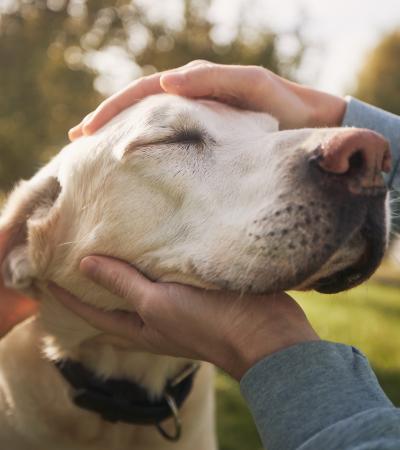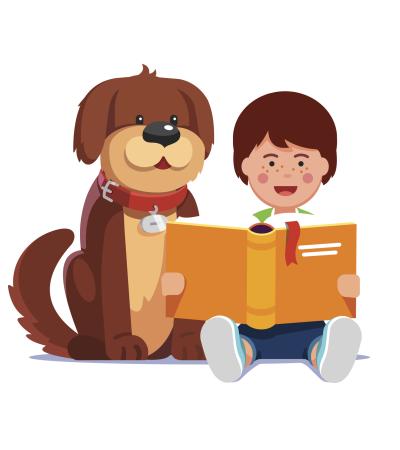There are very few programs that guarantee great attendance, but animal programs are a safe bet for all age groups. Who wouldn’t want to snuggle with kittens, meet rescue dogs or learn about exotic animals? Here are a few of my tried-and-true ideas to incorporate some furry (or slimy, feathery or slithery) friends into your programs.

Nature center visit
Environmental groups, zoos and nature centers are often happy to give presentations at libraries; part of their mission is to educate the public on conservation and the environment. They often bring animals or objects for the audience to see and touch.
For that reason, nature center visits are a huge hit with families with young children. At my library, kids have gotten to peer into lake water to view tadpoles, see what’s in an owl pellet (you don’t want to know) and pet plenty of animals.
My library regularly has a zoo visit for summer reading, and they bring four small animals each time. Last year we got to see a ferret, a tiny rabbit, a blue-tongued skink and a ball python.
Reading with Rover
Many kids who balk at the idea of reading on their own are excited to read to a four-legged friend. Track down a certified therapy dog (one with a Canine Good Citizen certificate, not just an emotional support animal) and see if the owner would be willing to bring their dog by the library to be read to.
Reading to a non-judgmental, snuggly creature may just turn a non-reader into a lover of books. (Check out this program model for help getting started.)
Cat café
Cat cafés originated in Taiwan but have become popular in the states. It's a simple idea: attendees enjoy coffee, then spend time in a room full of cute kitties.
A few tips: for best results, have a confined space for the cats to roam rather than letting them wander through the whole building. Make sure any potential feline hiding spots are not accessible, and ask attendees sign up for 15-minute time slots in groups of no more than six so the cats won’t get overwhelmed. (Read about Rebecca McCorkindale's experience successfully implementing cat cafés at her small library.)
Visit from the Humane Society
Humane societies, animal rescues and shelters tend to be great program partners. Organizations like these are constantly in need of donations, volunteers and adoptions, so they tend to be delighted at the chance to spread the word about the work they do.
Invite them to bring some adoptable cats or dogs and simply speak about the importance of animal rescue. Or for a craftier approach, attendees could make homemade dog treats (there are recipes aplenty on Pinterest), rope toys and easy no-sew pet beds, then share with furry friends at the shelter.
For a youth program, ask the organization to discuss proper dog care and how to approach a dog you don’t know, then whip up some human-only puppy chow and make dog ears out of felt and plastic headbands. You could also do a “de-stress” program for high schoolers or college students dealing with the pressure of finals week, pairing cuddles with adoptable puppies or kittens with coloring sheets and stress balls.

Dog agility course
Agility is one of the fastest-growing dog sports in the country, according to the American Kennel Club, and it's thrilling to watch as dogs crawl through tunnels, weave around poles and leap through tires.
When not at the library, I have a pet-sitting business, and one of my clients has several Shelties trained in agility and nose work. She was kind enough to bring in the dogs and some props for an “animal hero” program to show off their skills. The kids loved watching the dogs, and they really loved cuddling with them afterward. Your local kennel club may be able to help you find an owner whose dog is trained in agility.
Animal yoga
This trend has included goat yoga, kitten yoga, puppy yoga and (believe it or not) chicken yoga. The yoga part is the same as any exercise class; it just includes the fun addition of animals climbing all over you! (Obviously, the intent is more to have a fun and unique experience rather than get quality exercise.) My husband and I experienced a goat yoga class when we visited Boulder, Colorado, and having a baby goat balance on your back while trying to hold a plank is an experience like none other.
Before trying out any of these programs, make sure to check your library policies regarding animals in the building. You will also need to verify that the animals you are bringing in are OK to be around people. It's best to have attendees sign a waiver before interacting with any animals, just to be safe.
Finally, this is a program best held outside because animals will “go” wherever they please, and that’s one mess you don’t want to have to clean up.
If you have held any programs involving animals, please share in the comments. I’m always looking for new ideas!



